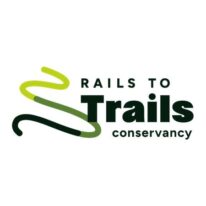Rail-Trail Champion Sarah Clark Stuart On Philadelphia’s Visionary Trail Network
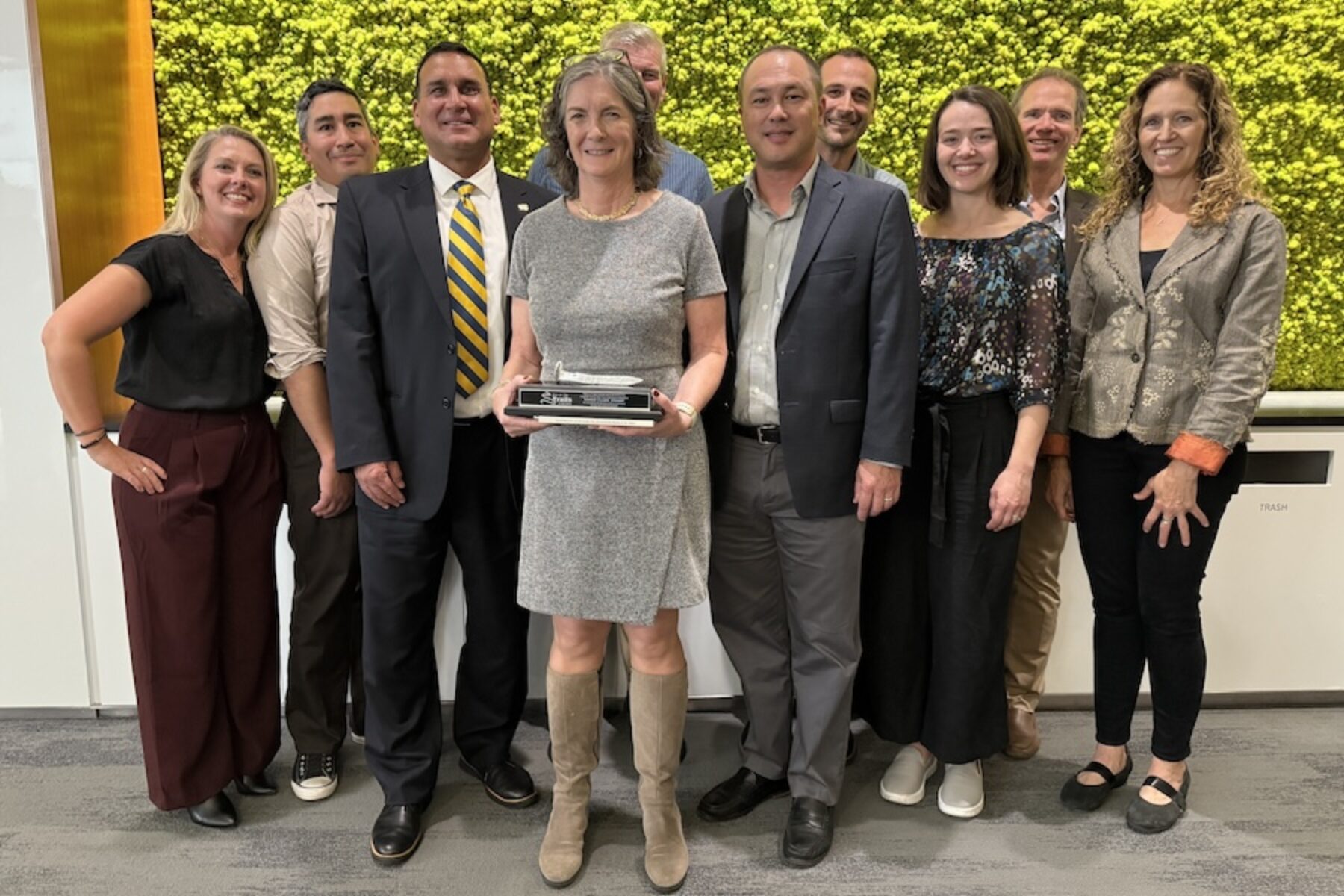
In October 2024, Sarah Clark Stuart was named Doppelt Family Rail-Trail Champion of the year for her visionary leadership on the Circuit Trails network, which will eventually connect more than 860 miles of trails across Greater Philadelphia and South Jersey.
The former executive director of the Bicycle Coalition of Greater Philadelphia led the strategy to develop more than 150 miles of trails and secure $240 million in funds to advance the trail network in her time as chair of the Circuit Trails Coalition. Stuart continues to bring safe walking and bicycling facilities to Philadelphia as the trails and transportation manager in the City of Philadelphia’s Department of Streets.
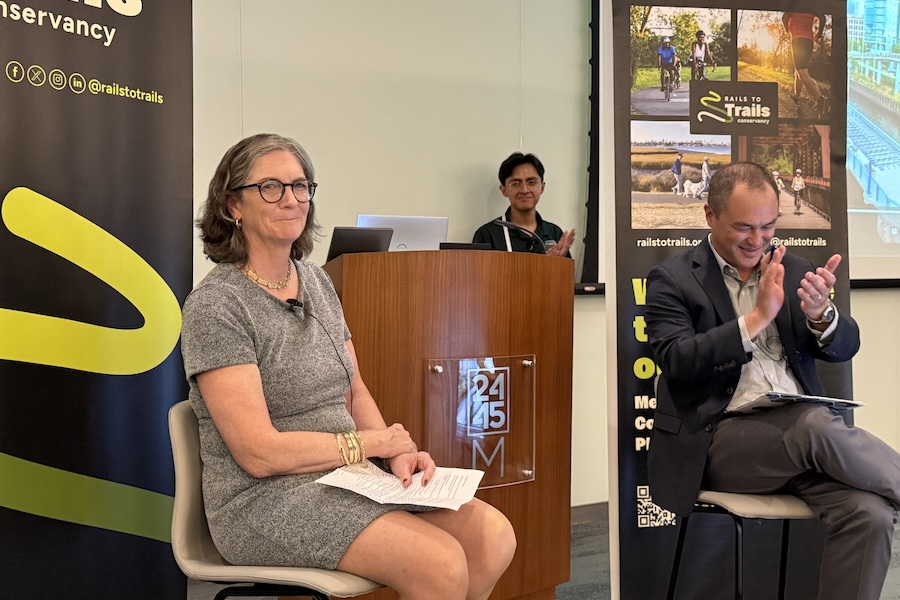
Rails to Trails Conservancy President Ryan Chao sat down with Stuart to talk about the recognition. Following is a summary of their conversation.
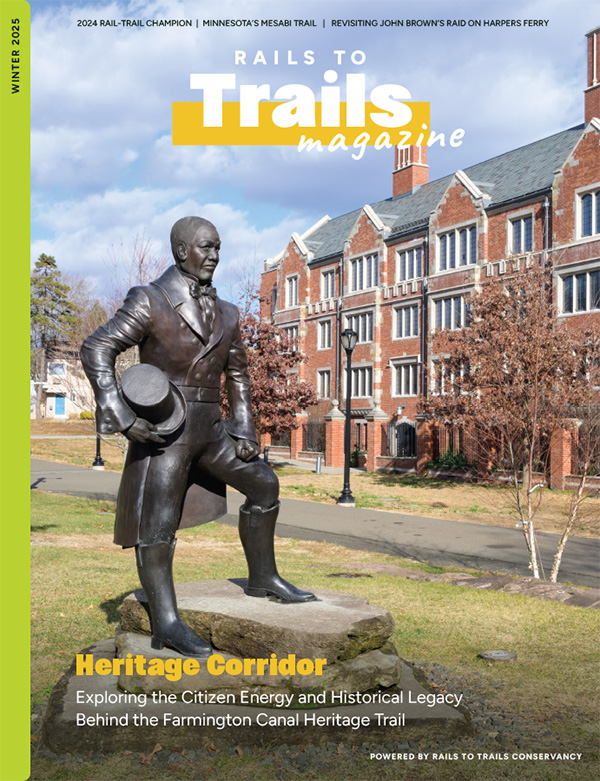
This article was originally published in the Winter 2025 issue of Rails to Trails magazine and has been reposted here in an extended format. Subscribe to read more articles about remarkable trails while also supporting our work.
Watch the full interview.
Sarah, You’ve talked about the importance of advocacy to a region-wide vision like the Circuit Trails. What motivates your advocacy?
I would say three things. [The first two are] climate and safety. We shouldn’t be a country where we’re the second-biggest emitter of greenhouse gases, [or] that has such a high rate of traffic fatalities. Doing the advocacy to help make that better and make an impact has always been motivating to me. The third thing is to get stuff done. [It’s important] to be able to show impact and results. … Seeing the visible manifestation of your work—that’s really, really motivating and just makes you feel great.
“It’s very much also about bringing a safe and accessible asset to many neighborhoods that don’t have that kind of open space now.”
Let’s talk more specifically about trails. How did that emerge as something that became a priority and a critical issue?
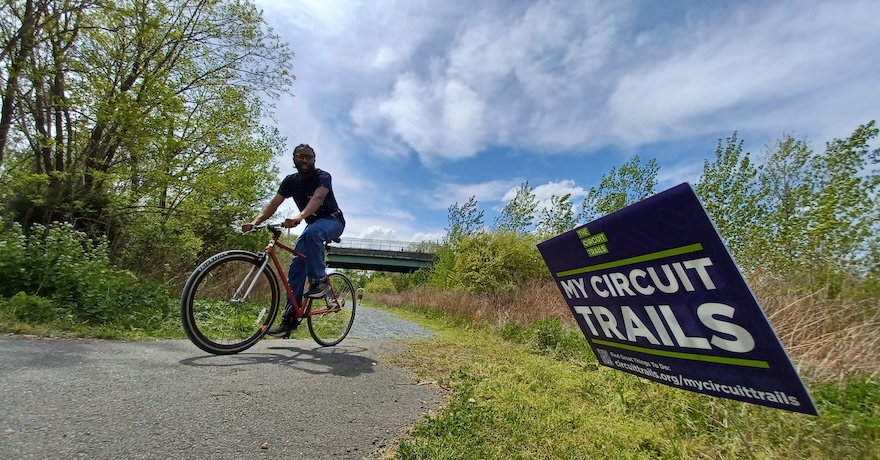
I started out as an environmental scientist working for the Environmental Defense Fund in the late 1980s. And I immersed myself in an issue that was really emerging, which was climate change. But also, I got to work a little bit on transportation policy … and then I left EDF and was hired by The Pew Charitable Trusts. And I went off into a totally different direction. I worked on marine fisheries and coastal water pollution and estuaries, which was a lot of fun. And that’s what brought me to Philly. We moved to this neighborhood where I remember very clearly the realtor telling me, “Over there, there’s going to be a trail one day.” This was in 1995.
There was a railroad track and the river, and that was it. And lo and behold, almost 10 years later, the trail started to be built, and we were so excited to get on the Schuylkill River Trail right in our backyard … and then we learned that the railroad wanted to put up a fence and seal it off. I was incensed by that. And so were a lot of my neighbors and my late husband. This is 2004, when the internet was just exploding … online advocacy was very young. My husband was a complete techie, and he said, “Let’s buy laptops, and let’s buy a hotspot, and let’s go down to the trail and get people to sign a petition.” And we built up a list of thousands of names.
And the minute [the trail] was built, people were all over it—running, walking, biking.
And so, we ran this campaign to effectively shame the railroad into cooperating, and it turned into a lawsuit, and the city stepped up and held two years of negotiating a settlement. And that settlement resulted in automatic gates … and a connector bridge over the railroad tracks.
I remember someone from the city said, “Are you kidding? We’re going to have to find $5 million in capital funds [for the connector bridge]? We don’t have that.”
I said, “Okay, well, I guess I’ll have to help you find the money.” So that was my next purpose. And that’s when the [federal] TIGER Grant opportunity came along. So, it started as: Let’s do the connector bridge, and then [we said] let’s put the boardwalk on … and more and more trails got into the proposal. Trail segments. And then we realized what we were doing was filling in gaps of a network. My colleagues with whom I was working—Spencer Finch, Patrick Starr, Jeff Knowles, the East Coast Greenway Alliance—we realized that’s the pitch of the proposal. And that’s what led to [the Circuit Trails network].
And by this time, you were at the Bicycle Coalition?
I was. I loved the Bicycle Coalition because they were at the nexus of this movement that was really burgeoning in the late 2000s—the bicycle-pedestrian movement that was just sweeping big cities and all over.
You’re currently trails and transportation manager in the city’s Department of Streets. How has that changed your perspective about what it takes to bring together trail networks?
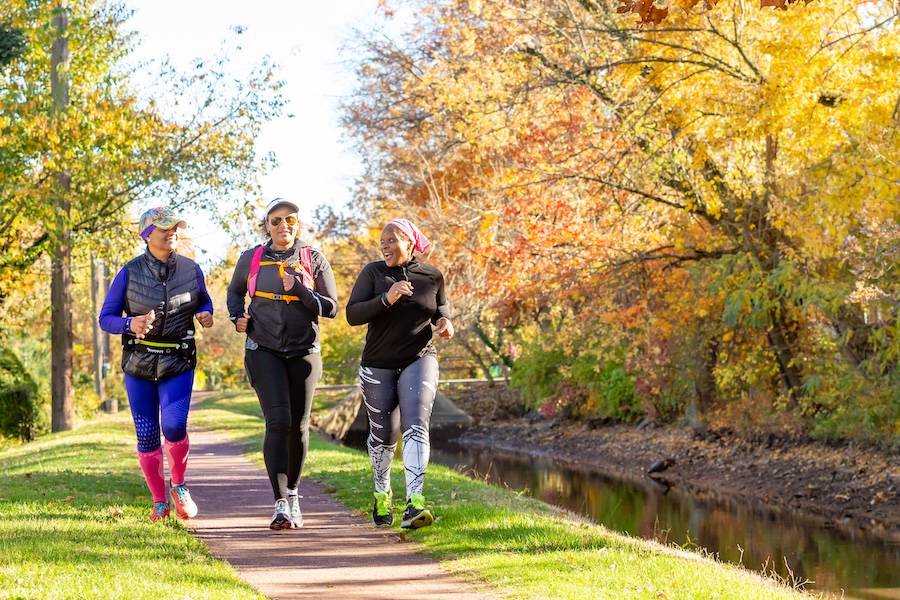
[For years] I have been throwing rocks and trying to get decision-makers’ attention from the outside, and now I’m on the inside. I see how much harder it is. But I also see all this opportunity. [Trails] are transportation assets and facilities. [They are] part of a larger regional network, of course, which is the Circuit. But it’s very much also about bringing a safe and accessible asset to many neighborhoods that don’t have that kind of open space now.
What advice would you offer to people who are working to build and advance connected trails across the country?
You have to persevere. You just have to keep at it—it will take a long time. Trail projects … need to be nurtured and pushed along. And you have to have collaborators. I worked with the Circuit Trails Coalition for 10 years; it is a highly functioning, productive, fantastic coalition. And that’s why I think we got so much done.
And I think the last thing is that you need to have supporters in leadership … whether it’s your governor or your mayor or your deputy commissioner. … That’s what really makes the magic happen.
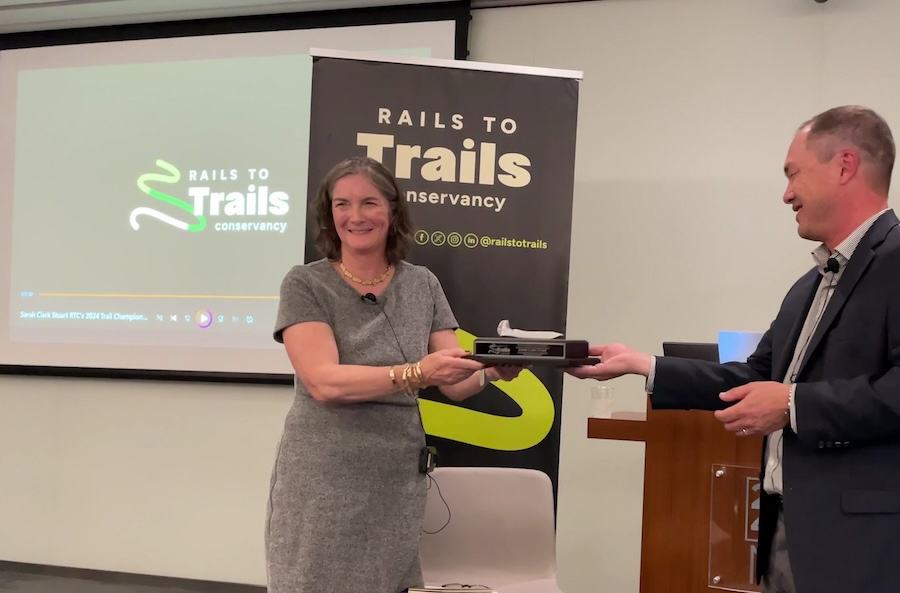

This article was originally published in the Winter 2025 issue of Rails to Trails magazine and has been reposted here in an extended format. Subscribe to read more articles about remarkable trails while also supporting our work.
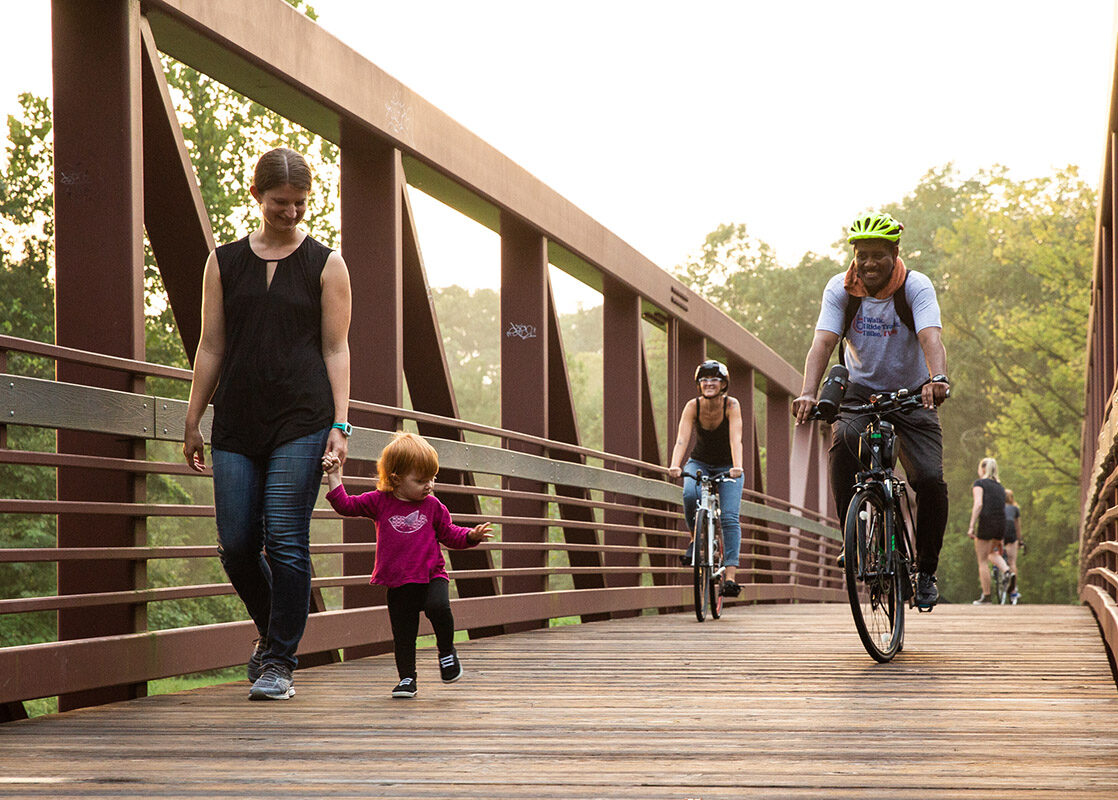
Donate
Everyone deserves access to safe ways to walk, bike, and be active outdoors.
